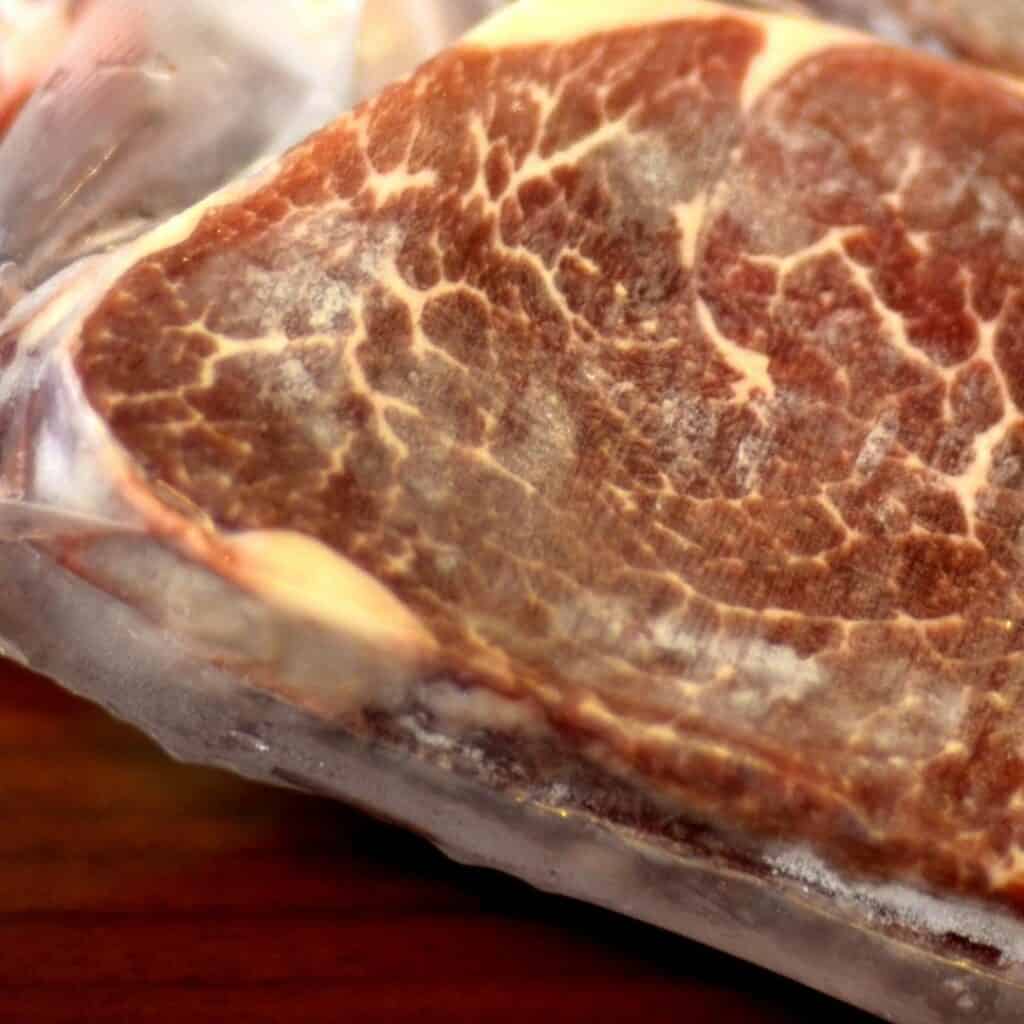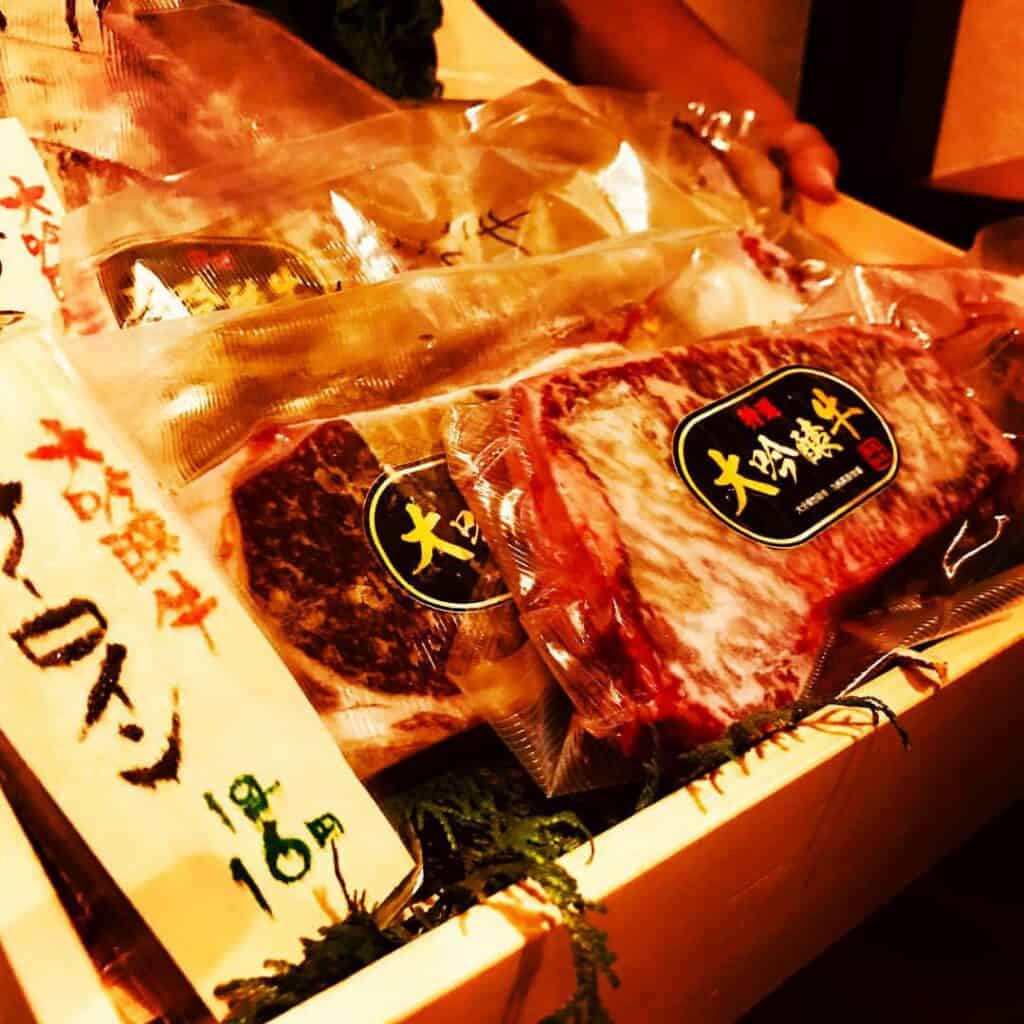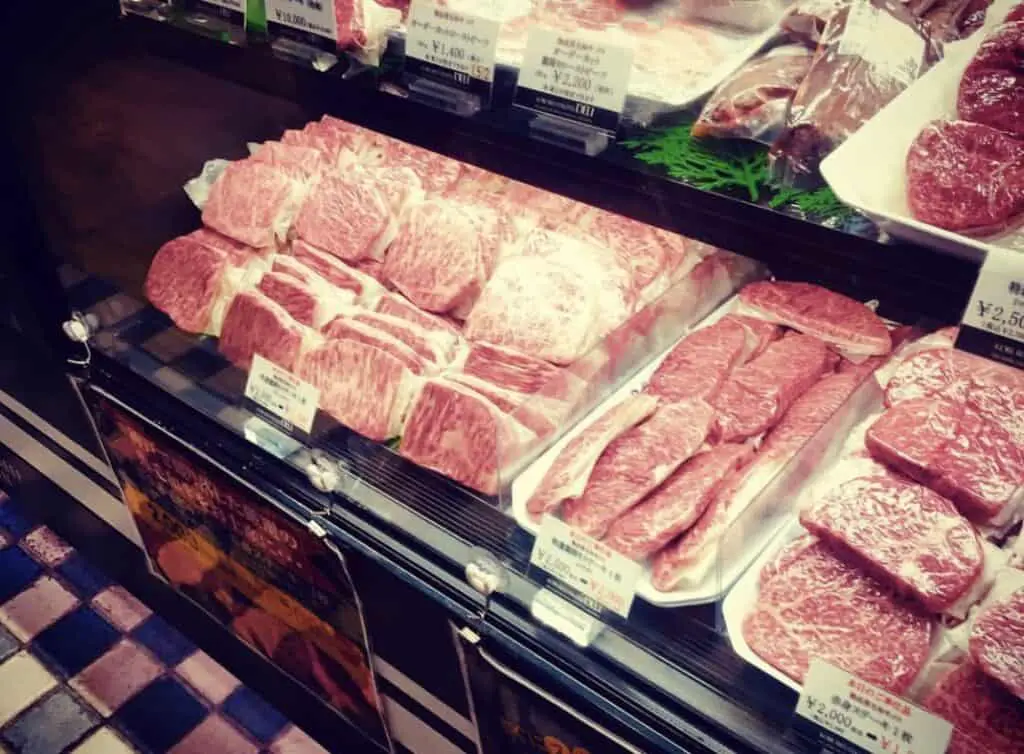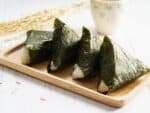Wagyu Beef is hailed as the king of flavor. This beef comes from only a few strains of cow from Japan and its high level of marbling makes it a delicacy famous around the world. If you’re lucky enough to get some authentic wagyu beef you may be left wondering if you could, or should, freeze it?
So, can you freeze wagyu beef? Yes, you can freeze wagyu beef. Because of its high percentage of marbled fat, Wagyu is one of the best meats to freeze. Due to the higher fat percentage in Wagyu, the quality of the meat is not degraded by freezing, which happens with most other meats.
In fact, your wagyu beef was likely frozen when it was shipped. Check this page out to get the most out of your Wagyu.


Snake River Farms wagyu beef is the real deal. It’s super-tender, juicy, and absolutely delicious. If you’re looking for a luxurious beef experience, look no further than Snake River Farms.
There are still some do’s and don’t when it comes to handling wagyu beef. Since this type of beef is quite expensive it’s worth getting all the know-how beforehand. If stored and prepared properly, this is one meal you won’t forget.
How To Thaw Wagyu Beef

When you purchase your wagyu beef, it’ll likely come vacuum sealed. This is a very common practice among the sale of meat, and it’s the perfect way to store your meat at home as well. If you are not planning to eat your wagyu today then you will be able to place it straight into the freezer as it is.
Once in the freezer, the meat should stay fresh for up to 12 months. However, according to the United States Department of Agriculture (USDA) “frozen foods remain safe indefinitely” in the freezer. So if you leave the beef in the freezer for longer than 12 months it will still be okay to eat, but you can expect some degradation in the taste. To ensure you keep a track of the time you should consume your frozen Wagyu beef for an optimum , check out these removable food storage labels from Etsy that you can stick on your vacuum sealed container.
The idea of leaving wagyu steak in the freezer for 12 months sounds preposterous. It’s much more likely that you will want to tuck into it a lot sooner. It pays to plan ahead for when you want to eat wagyu beef.
Ideally, you want to give the beef 48 hours to thaw in the refrigerator. This way you can ensure that the meat will retain all of its natural juices. Because of its high-fat content wagyu is an exceptionally juicy steak, for the optimal taste you should try to retain these juices.
Wondering if Wagyu Cows are Happy? Read this post to know more.
Can I Refreeze Wagyu Beef?
If there’s been a change of plans and you can refreeze the wagyu if you need. However, this is best done while the beef is still vacuum packed and before it’s been thawed for 24 hours or more. Any time longer than this you can risk the growth of bacteria, particularly if it is no longer vacuum sealed.
Sometimes the need to refreeze can catch you by surprise and it’s important to avoid waste. Particularly when your beef is expensive and deserves to be eaten rather than thrown away. Refreezing is an unpopular move, but most meat is frozen at least twice before it reaches the customer.
How To Tell If Your Wagyu Beef Is Spoiled?
When it comes to food quality, packaging usually has a use-by date which will tell you when the item should no longer be consumed. If the item doesn’t have a use-by date it may have a sell-by date instead. The slight difference here is that the item will still be for human consumption but may not be at its highest quality.
It’s a fairly robust system that unfortunately falls apart when you consider frozen food. When you freeze something the use-by date will no longer be relevant, as the act of freezing will preserve the quality of the food. As such, it’s important to know how to spot a spoiled item before you risk food poisoning.
When it comes to Wagyu beef there are a few things to look out for:
Slimy surface: When the steak has spoiled a slight slimy surface will develop that could be clear or slightly yellow. It will make the steak seem shiner than usual. Shortly after this slimy surface has developed, mold will start to set in.
Discoloration: Another sign that your meat is spoiled is if the steak has changed an odd color. If your wagyu is looking slightly more brown, yellow or green that means you have spoiled beef. This coloration may not be visible all over the steak, but even a small area should be worrisome.
Smell: The smell of spoiled beef should be quite noticeable. While raw beef doesn’t usually smell the best, it’s nothing compared to spoiled wagyu. If your steak has a potent smell that’s very off-putting, you’re better off binning it.
Dry: Your steak should not be, particularly wagyu beef which is known for being more tender and juicy. If upon touch your steak feels dry then this could be a sign the meat has turned.
The Best Way To Store Wagyu Beef

In the perfect scenario, you’ll be looking to tuck into your wagyu beef shortly after you get your hands on it. The best way to store your wagyu at home is to place it in the coldest part of the fridge. Ideally still in its vacuum sealed container.
If your wagyu is not vacuum sealed then you should tightly wrap it in cling film before putting it in the fridge. This is to stop the meat from oxidizing, which is aided by placing the meat in the coldest part. Only freeze the steak if you absolutely have to, although I am sure you can’t wait to get your hands on it.
Never bring the meat to room temperature, whether you are thawing the steak or not. Thawing should be done in the refrigerator. Once it is thawed you should move it from the fridge straight into the frying pan. By doing this, you will ensure that the fat renders gently, season the beef with a healthy serving of sea salt and black pepper.
Hopefully, you enjoy your wagyu beef and it tastes as fresh as you would expect it to. If this is your first time trying wagyu then you are in for a treat! It’s renowned around the world for being among the juiciest and tastiest kinds of steaks!





























